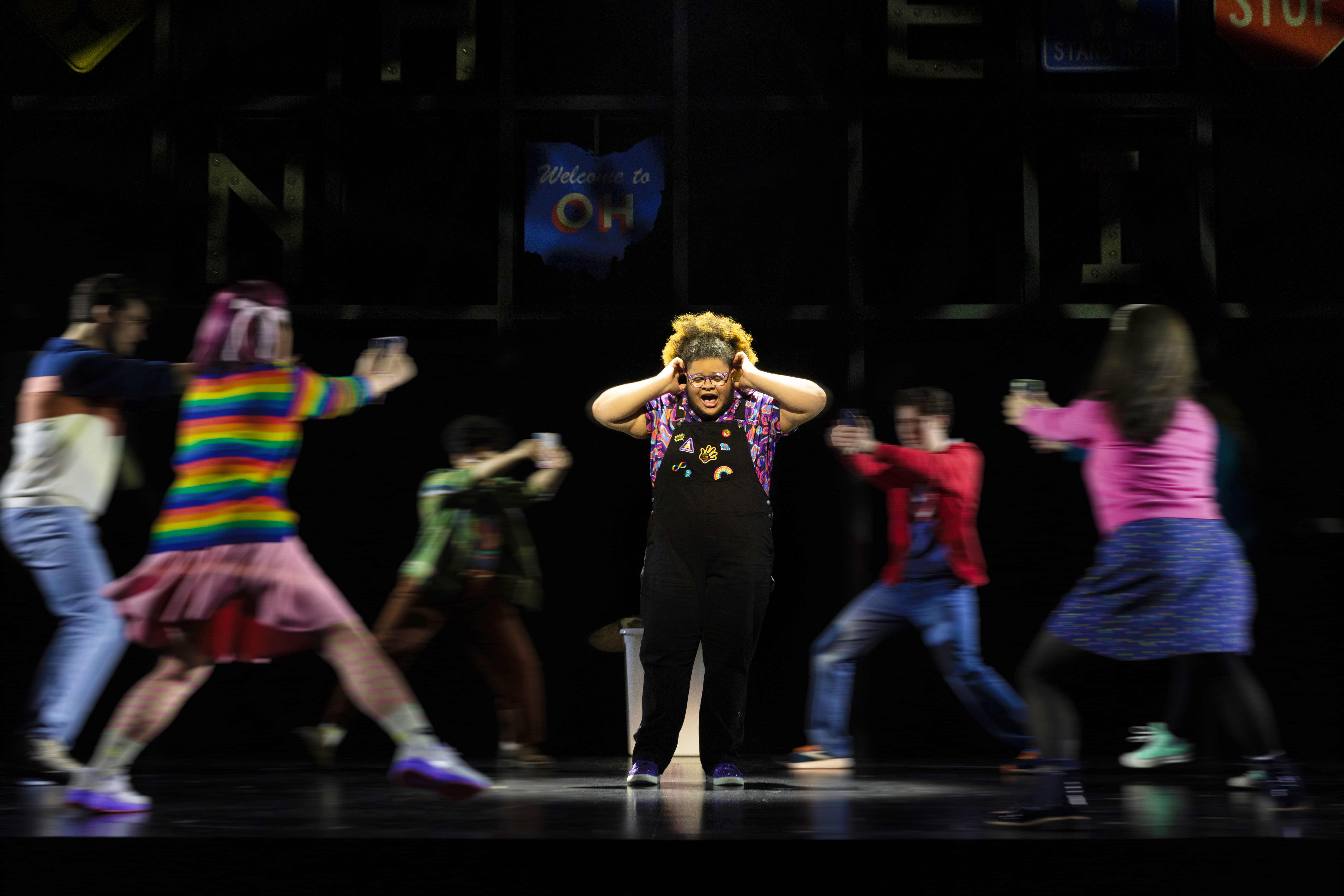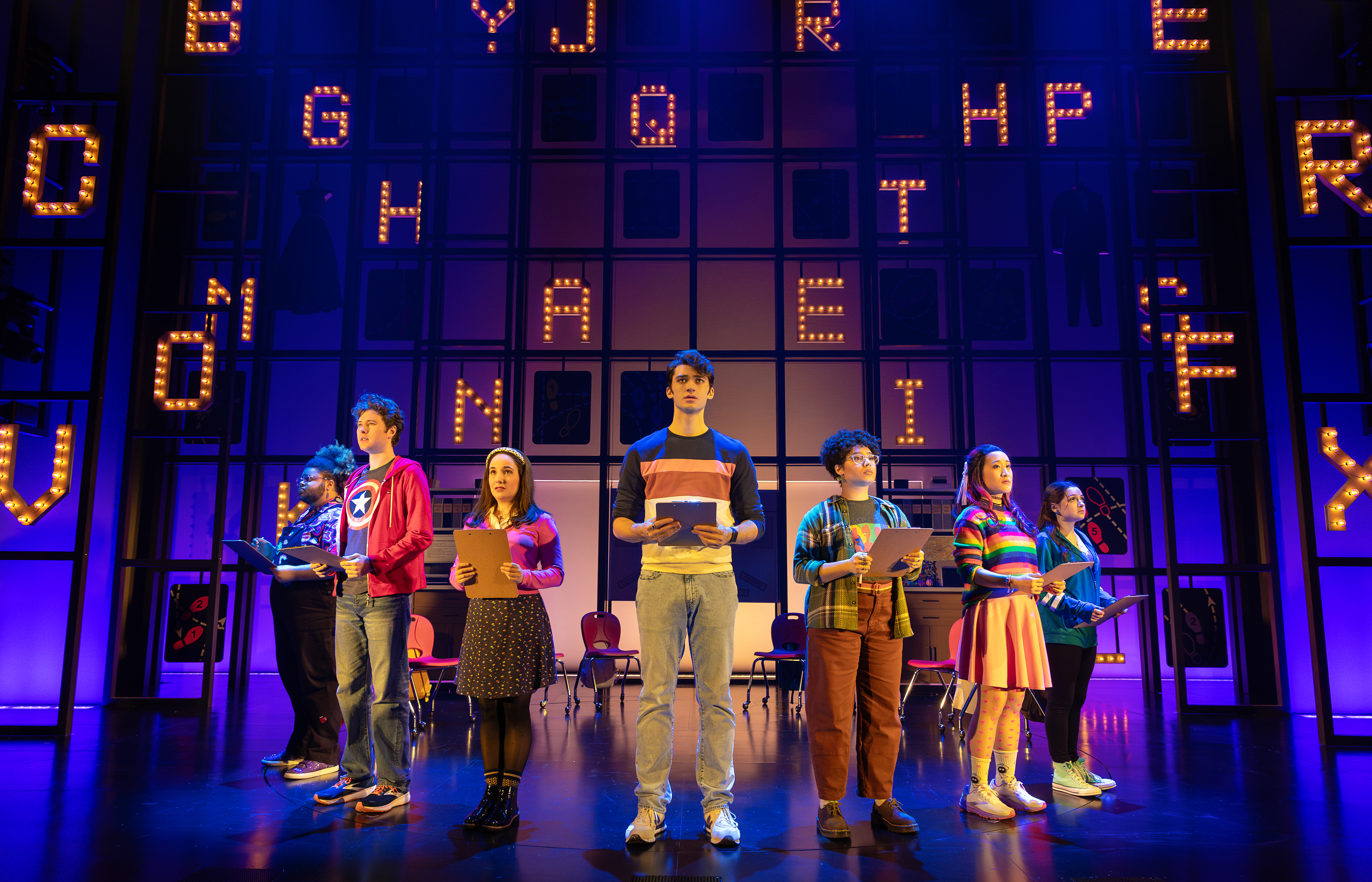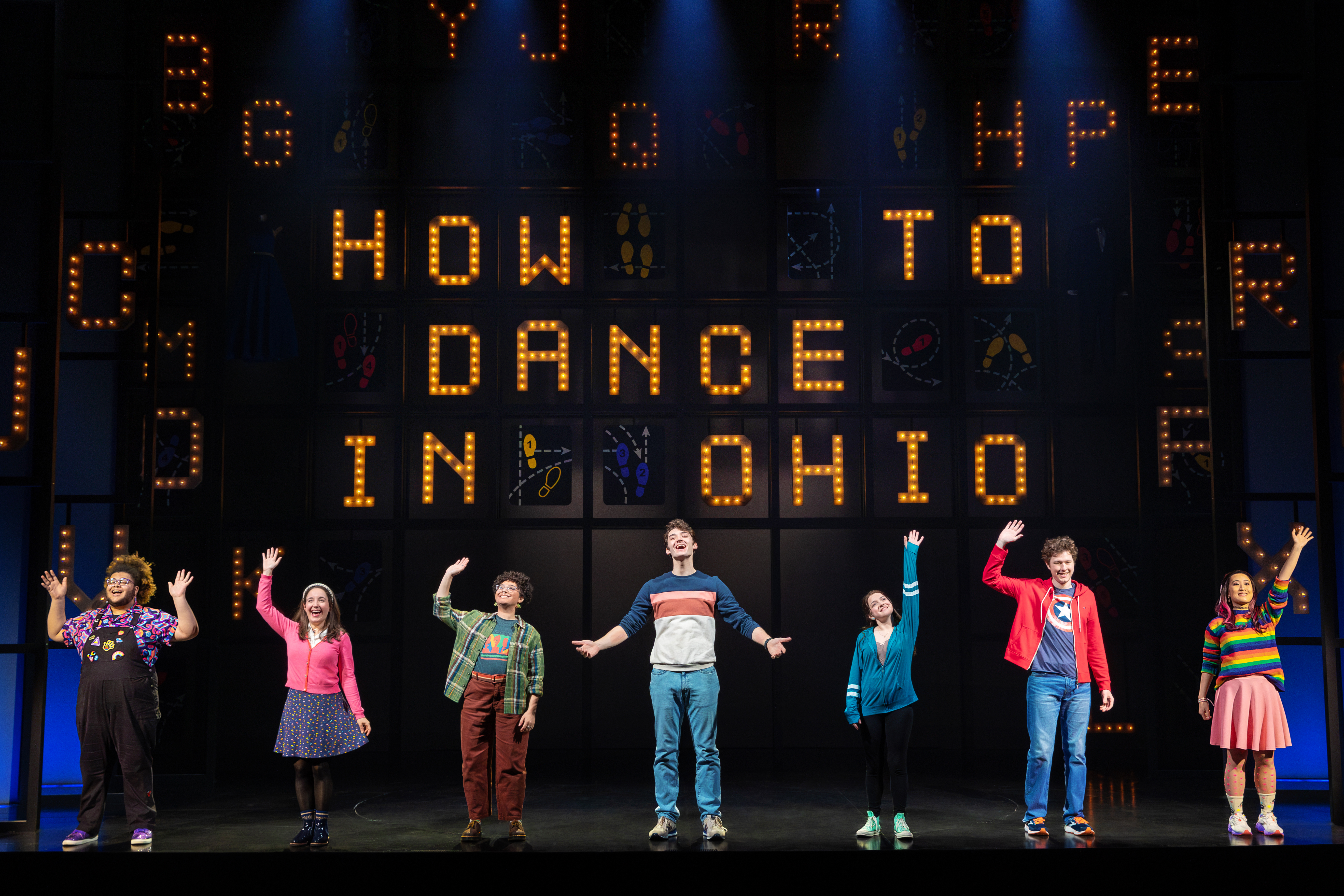Review: How to Dance in Ohio Is a Game Changer for Accessibility on Broadway
A new musical seeks to offer a new vision for the Great White Way.

(© Curtis Brown)
Broadway hasn’t had a great history of representing disability and neurodiversity in positive or accurate ways, and rarely throughout the entertainment industry have disabled characters been played by disabled actors. How to Dance in Ohio, a new musical based on Alexandra Shiva’s 2015 HBO documentary at the Belasco Theatre, seeks to change all that and offers a new vision for Broadway.
In How to Dance in Ohio, a group of seven autistic young adults who go to the same counseling center spend months preparing for a formal dance that their therapist, Dr. Emilio Amigo (Caesar Samayoa), proposes as a therapeutic tool. They learn life skills and social etiquette rules, navigate buying dresses and finding dates, and practice how to dance.
A key motto in the disability and autistic communities is “nothing about us without us.” This is not just a slogan, but a political statement, and one that this show full-heartedly abides by in the casting and the writing. What makes How to Dance in Ohio a unique and unprecedented production is that it not only centers the experience of its seven autistic characters, but they are portrayed by seven autistic actors, all making their Broadway debuts: Desmond Luis Edwards, Amelia Fei, Madison Kopec, Liam Pearce, Imani Russell, Conor Tague, and Ashley Wool.
The main conflict occurs as the dance approaches and the event gets attention from the press, which ends up centering Dr. Amigo over the participating young people. One particular blog post is awash with deeply ableist lines about Dr. Amigo being a “hero” for working with “differently-abled patients” with “special needs” who “suffer from Autism Spectrum Disorder, which for them, and also for their families, is a life sentence.” When the cast members read this aloud, you can feel the pain in their hearts and a wave of secondhand hurt ripple through the audience.

(© Curtis Brown)
In response, one of the autistic characters, Remy (Edwards) sings a powerful ballad about constantly dealing with “ableist cliches” and “good intentions that only make me feel small.” He declares, “Do I only exist on this planet to make somebody else feel inspired? I’m no object of pity, and if that’s what you see, then clearly you aren’t seeing me.” The musical manages an extremely difficult task, successfully educating the audience about ableism and preferred (and not preferred) terminology, getting ahead of non-ideal ways people may talk about the show all within the world of the musical’s plot.
It’s a commendable achievement, though I wish the rest of the show was similarly strong. How to Dance in Ohio is hurt by a generic, bland score by Jacob Yandura, with otherwise forgettable lyrics from Yandura and Rebekah Greer Melocik. Many of the songs are reminiscent of other contemporary pop-inflected musicals like Heathers, Dear Evan Hansen, Be More Chill, Billy Elliot, Kimberly Akimbo, and The Prom.
Throughout, there are recurrent symbols about interconnectedness. When we meet the characters at group therapy they hold a ball of yarn, connecting them as they talk about their days and relate to each other. Elsewhere, they reference electric currents, continents drifting toward each other, and partners dancing. Melocik’s book beautifully weaves everyone together, providing the seven autistic characters deeply individuated and differentiated personalities. As the autistic actors say at the beginning of the musical, “if you’ve met one autistic person…you’ve met one autistic person,” highlighting the variation and diversity within autism experiences. I was disappointed that it didn’t talk more about sexuality and gender expansivity, especially since queerness and gender exploration can be so fraught for autistic people because of problematic diagnostic notions.
Sammi Cannold’s direction is a little too sentimental, but is thoughtful. In a meaningful choice, her team created a show that is “sensory-friendly” so it wouldn’t be overwhelming for autistic people; likewise, the theater itself has designated cool down spaces and free sensory processing tools like headphones and sunglasses. Much like Ryan J. Haddad’s Dark Disabled Stories, accessibility is built in and fundamental to the piece, onstage and off. What other Broadway show’s merchandise includes a branded fidget spinner? The sensory-friendly design, though, does not excuse Robert Brill’s boring sets, which are too similar to his recent work on Hell’s Kitchen and Dancin’.
How to Dance in Ohio being on Broadway at all is a radical act, centering autistic experiences in a way that has never been done before. Previously, autism on Broadway was mostly just hinted at, mischaracterized, or portrayed by non-autistic actors. As Remy sings, “This whole conversation needs a huge overhaul, and if we simply do nothing, nothing will change at all.” How to Dance in Ohio is a vital step in the right direction, helping Broadway change for the better and become a more accepting, accessible, and autism-friendly place.

(© Curtis Brown)








